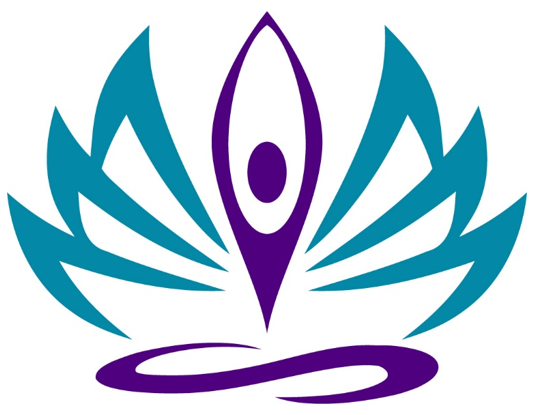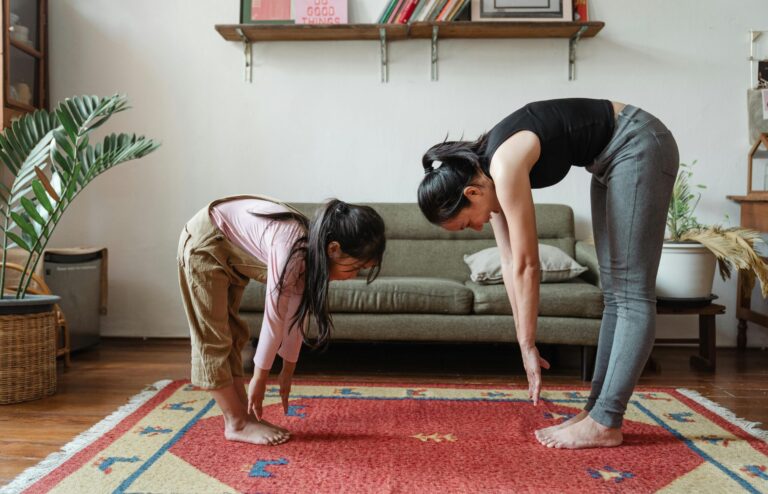Yoga to reduce asymmetries - balance for your musculoskeletal system
Our bodies are not perfectly symmetrical by nature. However, if certain muscular and structural asymmetries are too pronounced, our posture, quality of movement and perception of pain are affected. This is precisely where a targeted, asymmetrical yoga practice comes in: It can help to compensate for imbalances, release one-sided tension patterns and improve functional mobility.
Why do asymmetries arise?
The human body is not symmetrical. The brain hemispheres have an unequal connection to the body hemispheres. This results in a certain dominance of the right side of the body (even in left-handed people). In addition, our organs on the left and right are not equally distributed or identical. In particular, the larger right lung and the associated more pronounced right side of the diaphragm lead to asymmetries in the body. This results in what the Postural Restoration Institute® (PRI) calls the Left AIC Pattern (Anterior Interior Chain):
- The lumbar spine tends to rotate to the right
- The left side of the pelvis is further forward and is in a more externally rotated position
- The right side of the pelvis is more internally rotated and more posteriorly oriented
Among other things, this pattern influences the tension of the left versus right psoas muscles, the pelvic position and the flow of movement in the walking movement. Compensation occurs in the upper body, a pattern that the PRI calls the right BC (brachial chain):
- The right front of the ribcage is pulled downwards and the ribs are pulled together (internal rotation of the ribs)
- The left front of the ribcage is pulled upwards and the ribs are spread (external rotation of the ribs)
This leads to an overall picture of a lower body oriented to the right, but a restriction of movement of the torso in rotation to the right.
In addition, a large part of our everyday movements are highly one-sided: we carry bags on one side, favor one leg when standing or sitting, always sleep on the same side, etc.
In the article "Yoga in the morning for the whole body" we have already looked at how typical asymmetries can affect morning stiffness and posture. Today we want to take a closer look at how you can work on reducing asymmetries through an asymmetrical yoga practice.
Aim of the practice: Centering instead of symmetry
The goal is not a completely symmetrical body - that would be unrealistic and also not biomechanically necessary. Rather, it is about functional centering:
- The joints should be centered in their sockets.
- The muscles should be able to fulfill their tasks on both sides.
- The movement and muscle tension should be balanced across both sides.
Effective yoga elements to reduce asymmetries
I have recorded a 90-minute yoga session to reduce the natural asymmetries of the left AIC - right BC pattern. You can find it here:
If you don't have 90 minutes or prefer to do the exercises for yourself, here are some asanas that can help reduce asymmetries:
1. lateral child position
- Get into the child position.
- Place your upper body over your left thigh.
- If necessary, place a cushion on your thigh so that you can rest your chest and stomach on it.
- The forehead can rest on the floor or a block.
- Stretch your arms out to the front left and breathe into the right side of your chest.
- Stay here for 20-30 seconds

This variation of the child's pose helps you to promote the external rotation of the ribs on the right side of the ribcage and reduce overall tension in the right front of the body. If you have a lot of tension in your chest overall, you can repeat this exercise on the other side. However, you should then come back to the first side so that the right side is stretched more than the left.
2. downward facing dog with one-sided rotation
- Start in a short downward facing dog.
- Bring your right hand to the left outer ankle or shin.
- The muscles on the right side of the upper back should be tense between the spine and the shoulder blade.
- Hold this twisted position for 5-6 deep diaphragmatic breaths.

This posture also promotes outward rotation of the ribs in the right front of the ribcage. This is favored by two aspects:
- The tense muscles on the right in the upper back push the air you breathe into the right front of the chest
- The inversion with rotation to the left leads to the accumulation of body fluids in the right side of the chest, which exerts additional gentle pressure on the ribs on the right front.
For this exercise too, it may be useful to perform it on the other side if your chest is very tense overall. However, you should also perform the exercise on the first side twice as often as possible.
3. lunge
- From a four-footed stance or downward-facing dog, bring your right foot forward between your hands.
- The left leg remains stretched backwards so that you feel a stretch in the front left leg.
- Now consciously press your right heel into the floor so that you feel activation on the outside of your right buttock.
- Your hands are placed on either side of your right foot.
- Your right knee remains above the ankle joint.
- Hold this position for approx. 30 seconds.

This position activates the right gluteal muscles and adds length to the hip flexor (psoas) on the left side. Both are key measures to correct the left AIC pattern, in which the left psoas muscle is shortened and the right side of the pelvis is too internally rotated (lack of tension in the right gluteal muscles).
This position should also be performed more often with the right foot in front. If you work with the left foot in front, you should press the ball of the big toe of the left foot into the floor instead of the heel, thereby relaxing or even stretching the left gluteal muscles.
4. tadasana with awareness training
- Stand up straight with your feet hip-width apart.
- Consciously feel whether your pelvis is tilted or twisted to one side.
- Gently activate your thigh and abdominal muscles to straighten yourself up.
- Then place your body weight mainly on your heels so that your heels, pelvis and head are in line.
- Feel whether your weight is evenly distributed on both feet or whether there is more weight on one foot.
- Hold this asana for 30 seconds and gently correct any imbalances.
Tadasana is a seemingly simple but deeply effective posture for training proprioceptive body awareness. It helps to perceive and actively compensate for subtle asymmetries.

Conclusion
A targeted yoga practice can help to recognize and gradually balance muscular asymmetries. The left AIC - right BC pattern in particular shows how deeply structural imprints influence our everyday movements. With breath awareness, targeted rotations and functional muscle activation, we can create more balance in our entire body system. If you want to delve deeper into the topic, I recommend you also take a look at my offer for biomechanical posture correction (link!).
Start your journey towards functional balance today and experience how much ease a well-centered posture brings.







